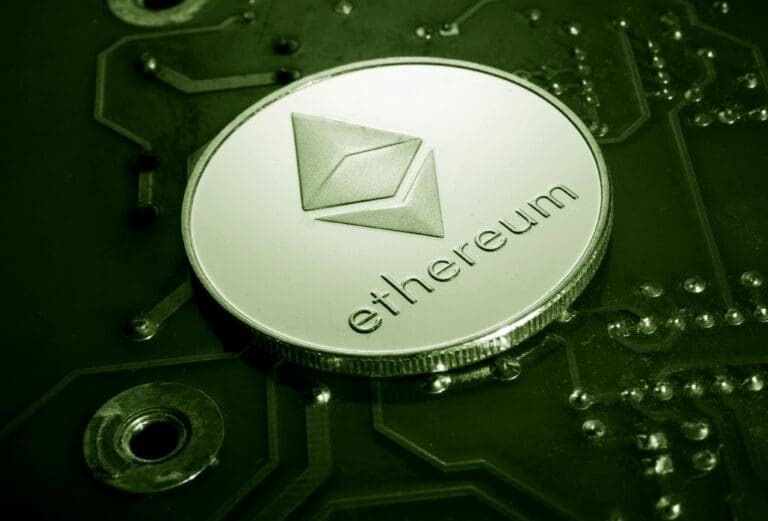Crypto News: Market Update August 2025
The U.S. economy showed a mixed picture at the end of July and in August, with signals of weakness in the labor market alongside signs of strength in consumer spending and the crypto market. While job growth disappointed and unemployment rose slightly, domestic demand remained robust, and Ethereum reached an all-time high. At the same time, inflation data and fluctuations in producer prices indicated that the Federal Reserve faces a challenging policy choice.
1 August: U.S. Labor Market Weakens: Sharp Drop in Job Numbers and Higher Unemployment
The U.S. economy added only 73,000 jobs in July, far below expectations. In addition, May and June figures were revised down by a total of 258,000 jobs, raising concerns about the labor market. Unemployment rose to 4.2%. Nearly all job growth came from healthcare and social assistance. The disappointing figures put pressure on the Federal Reserve to cut interest rates in September, with investors now seeing more than a 75% chance of a reduction. At the same time, declining labor force participation and rising long-term unemployment point to a cooling labor market. (Source: CNBC)
7 August: Trump Opens Door for Crypto and Alternative Investments in Retirement Accounts
President Donald Trump wants Americans to be able to invest in crypto, private equity, real estate, and gold through their retirement accounts (401ks). He gave regulators 180 days to ease rules that currently often prevent this.
According to Trump, this would give workers access to investments that are normally reserved for wealthy investors. Critics, however, warn of higher risks and costs. Large asset managers, such as Vanguard and State Street, are already preparing funds with alternative investments. (Source: BBC)
7 August: SEC Ends Years-Long Lawsuit Against Ripple
After nearly five years, the lawsuit between the SEC and Ripple has officially ended. Both parties have withdrawn their appeals and will bear their own costs. The 2023 ruling remains in place: Ripple must pay $125 million in fines and may no longer violate securities laws. The case began in 2020, when the SEC accused Ripple of illegally selling XRP as a security. In 2023, the judge ruled that Ripple had broken the law in institutional sales, but not in exchange trading to retail investors. Since Donald Trump’s reelection, the SEC has dropped several crypto-related cases. (Source: CoinDesk)
12 August: U.S. Inflation Remains Limited in July, Increasing Chances of Interest Rate Cut
In July, U.S. consumer prices rose less than expected, temporarily easing concerns about a strong inflation surge. Most of the increase came from higher housing costs, while food prices remained stable and energy became cheaper.
Although some categories showed minor effects from Trump’s tariffs, broad-based price pressures did not materialize. As a result, investors expect the Federal Reserve to cut interest rates in September, with a possible additional reduction in October.
According to economists, this report gives the Fed room to focus more on the weak labor market, but it remains uncertain how significant the long-term impact of the tariffs will be. (Source: CNBC)
14 August: U.S. Producer Prices Surge, Putting Pressure on Interest Rate Cuts
U.S. producer prices rose unexpectedly sharply in July, potentially signaling a broader resurgence of inflation. The Producer Price Index (PPI) jumped 0.9%, while analysts had expected only 0.2%.
The sharp increase was mainly driven by higher costs for goods and services, and possibly by companies using tariffs to boost their margins. For markets, this came as a shock: stocks fell, the dollar rose, and interest rates edged higher.
Economists are divided: some see this as a warning that the Federal Reserve may not be able to cut rates in September after all, while others believe the focus will still remain on the weak labor market. In any case, the data has significantly reduced certainty about a quick rate cut. (Source: Reuters)
24 August: Ethereum Reaches All-Time High, Strong Institutional Support
This past weekend, Ethereum reached an all-time high of nearly $5,000, reaffirming its strong position as the second-largest cryptocurrency. The rise is supported by institutional purchases, ETH ETF inflows, and a large portion of the supply being staked.
Despite a slight pullback to $4,431 at the start of the week, the long-term trend remains positive, partly due to growing interest in tokenization and the use of Ethereum as a treasury asset by companies. Bitcoin, meanwhile, saw a smaller correction, while focus on Ethereum as a leading crypto continues to increase. (Source:CNBC)
29 August: Strong Consumer Spending Drives Services Inflation in the U.S.
In July, U.S. consumer spending grew by 0.5%, the strongest increase in four months, mainly driven by purchases of cars, durable goods, and recreational products. Spending on services, such as financial services, insurance, healthcare, and housing, also rose, pushing core inflation up to 2.9% year-on-year.
Although domestic demand is strong, economists expect the Federal Reserve is likely to cut interest rates in September due to the weak labor market. The impact of import tariffs remained limited but could lead to price increases later this year. At the same time, rising consumption contributed to a larger trade deficit, which grew 22% in July, potentially tempering consumption’s contribution to GDP. (Source: Reuters)
Conclusion
Recent economic data show that the U.S. faces both challenges and growth opportunities. The labor market is weakening, but consumers continue to spend actively, and the crypto market is attracting institutional interest. This reinforces expectations that the Federal Reserve may cut interest rates in September, while businesses and investors take into account inflation, trade deficits, and new investment opportunities such as crypto and alternative assets.



